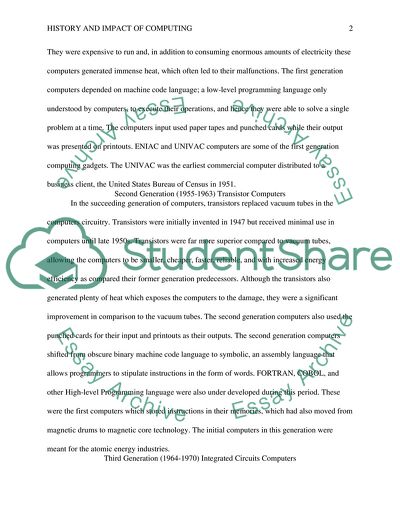Cite this document
(History and Impact of Computing Essay Example | Topics and Well Written Essays - 1250 words - 1, n.d.)
History and Impact of Computing Essay Example | Topics and Well Written Essays - 1250 words - 1. https://studentshare.org/information-technology/1797987-history-and-impact-of-computing
History and Impact of Computing Essay Example | Topics and Well Written Essays - 1250 words - 1. https://studentshare.org/information-technology/1797987-history-and-impact-of-computing
(History and Impact of Computing Essay Example | Topics and Well Written Essays - 1250 Words - 1)
History and Impact of Computing Essay Example | Topics and Well Written Essays - 1250 Words - 1. https://studentshare.org/information-technology/1797987-history-and-impact-of-computing.
History and Impact of Computing Essay Example | Topics and Well Written Essays - 1250 Words - 1. https://studentshare.org/information-technology/1797987-history-and-impact-of-computing.
“History and Impact of Computing Essay Example | Topics and Well Written Essays - 1250 Words - 1”. https://studentshare.org/information-technology/1797987-history-and-impact-of-computing.


